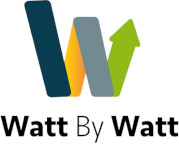Sekisui Chemical
 Japan-based Sekisui Chemical was established in 1947 and consists of three division companies (entities) and a corporate department. Sekisui is involved in a wide range of business in industries like: real-estate and housing, electronics, automotive, various chemicals and plastics (like photosensitive materials, semiconductors and more) and more.
Japan-based Sekisui Chemical was established in 1947 and consists of three division companies (entities) and a corporate department. Sekisui is involved in a wide range of business in industries like: real-estate and housing, electronics, automotive, various chemicals and plastics (like photosensitive materials, semiconductors and more) and more.
In the field of perovskites, Sekisui seems to be involved in research pertaining to aspects of solar cells like encapsulation and coatings, stability improvements and more. The Company may be working with Panasonic, but this is not confirmed.
In 2023, Sekisui announced it will begin mass production of perovskite solar cells, in an effort to catch up with Chinese competitors.


 Solertix is a start-up specialized in perovskite solar cells research and upscaling for industrial applications.
Solertix is a start-up specialized in perovskite solar cells research and upscaling for industrial applications.



 Verde Technologies is an NSF, DOE/SETO-funded startup, and NREL collaborator that spun out of the University of Vermont. Its core competency is the rapid transition from lab-scale to full-scale manufacturing of stable, efficient, and safe perovskite solar cells using existing manufacturing infrastructure.
Verde Technologies is an NSF, DOE/SETO-funded startup, and NREL collaborator that spun out of the University of Vermont. Its core competency is the rapid transition from lab-scale to full-scale manufacturing of stable, efficient, and safe perovskite solar cells using existing manufacturing infrastructure. WattByWatt is a Canadian company that grew from university research on perovskite technology.
WattByWatt is a Canadian company that grew from university research on perovskite technology.

